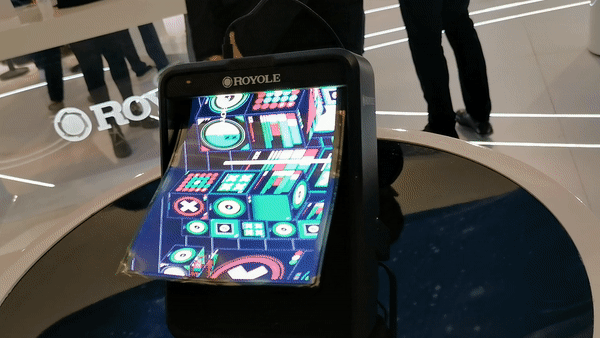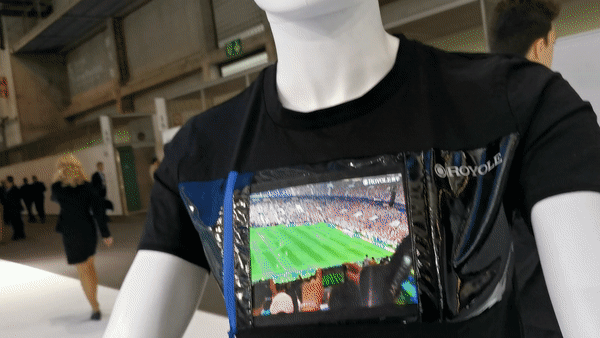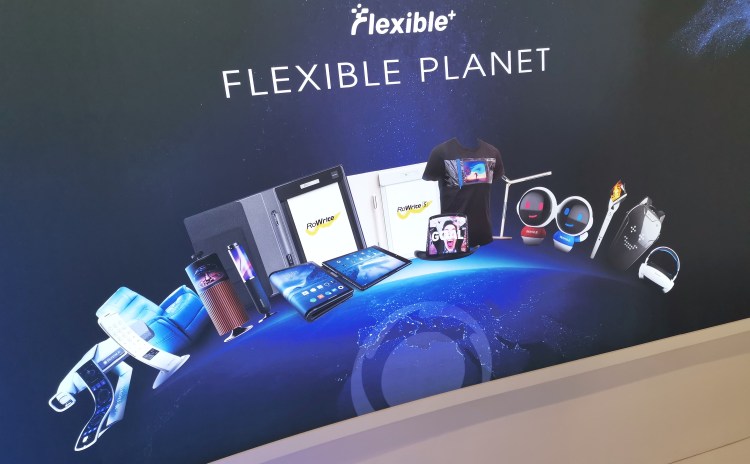Foldables were pretty much the talk of the town at MWC 2019. Both Samsung and Huawei had their respective flexible phones on display at the annual mobile extravaganza in Barcelona, though it was strictly hands-off for most people, given that the Galaxy Fold and Huawei Mate X were locked inside glass cases.
While the market-readiness of these devices, and even their practicalities, has been called into question, it’s clear that digital displays are evolving into something very different — which could lead to some interesting developments across the technology industry.
China’s Royole has raised north of $1 billion in the past seven years to develop — and market — flexible screens and sensors. In fact, the company launched its FlexPai phone a few months back in a race to one-up Samsung and Huawei. While its design may not be for everyone, it’s a sign of where things are heading.

Above: Royole: FlexPai
Royole, in fact, has a number of devices that sport malleable displays, some already on the market and others designed to show what is possible.
June 5th: The AI Audit in NYC
Join us next week in NYC to engage with top executive leaders, delving into strategies for auditing AI models to ensure fairness, optimal performance, and ethical compliance across diverse organizations. Secure your attendance for this exclusive invite-only event.
The Shenzhen-based company teased a super-thin 0.01mm display several years back, but seeing it in the flesh, so to speak, really is something — it’s basically a sheet of paper. Can you imagine a new kind of e-reader with physical digital pages? Whether it would make sense is another question, but building such a contraption certainly seems possible.

Above: Royole: Super-thin flexible display
Wearables
Such a svelte form factor opens up a whole world of possibilities — even enabling an entirely new type of “wearable.” Fancy a screen on your top hat?

Above: Royole: A screen on your hat
Or what about an always-on display across your t-shirt or handbag?

Above: Royole: Screens on everything
If you think these are little more than cobbled-together prototypes designed to grab headlines, you should know that Royole is already selling them. Or at least trying to. You can buy the hat or the t-shirt for around $1,300 each, though if you buy both together you can save around $500.
Needless to say, the actual use cases for these garments is pretty niche. You might imagine someone being paid to traverse a conference or other public event wearing one of these to market a product — but other than that, the appeal will be limited. So although you can buy these products, they seem more a show of what’s possible than anything else.
But Royole showcased a number of prototype products that could conceivably make it into the mainstream at some point. Can you imagine an Amazon Echo-like smart speaker with a near 360-degree display?

Above: Royole: Concept smart speaker with 300-degree display
Or what about curved displays embedded in your car’s steering wheel and dashboard?

Above: Royole: A car dashboard with curved flexible displays
Allowing carmakers to bend a display in any direction frees them from having to design around the limitations of a rigid form factor — they could simply shape the screen to fit the layout of the car.
A number of companies are also working on creating practical applications for flexible screen technology. Harman and Samsung, for example, are partnering to bring flexible OLEDs to cars, while earlier this year LG teased us with a TV screen that rolls up and down.
In the future, we may look back at many of these applications of flexible screen technology and grimace. But as new technological capabilities emerge, it’s only natural that people will toy around with innovative ways to package and market them — you might not want a TV on your t-shirt or top hat, but it’s clear that we’re entering a very interesting phase for mobile form factors.

